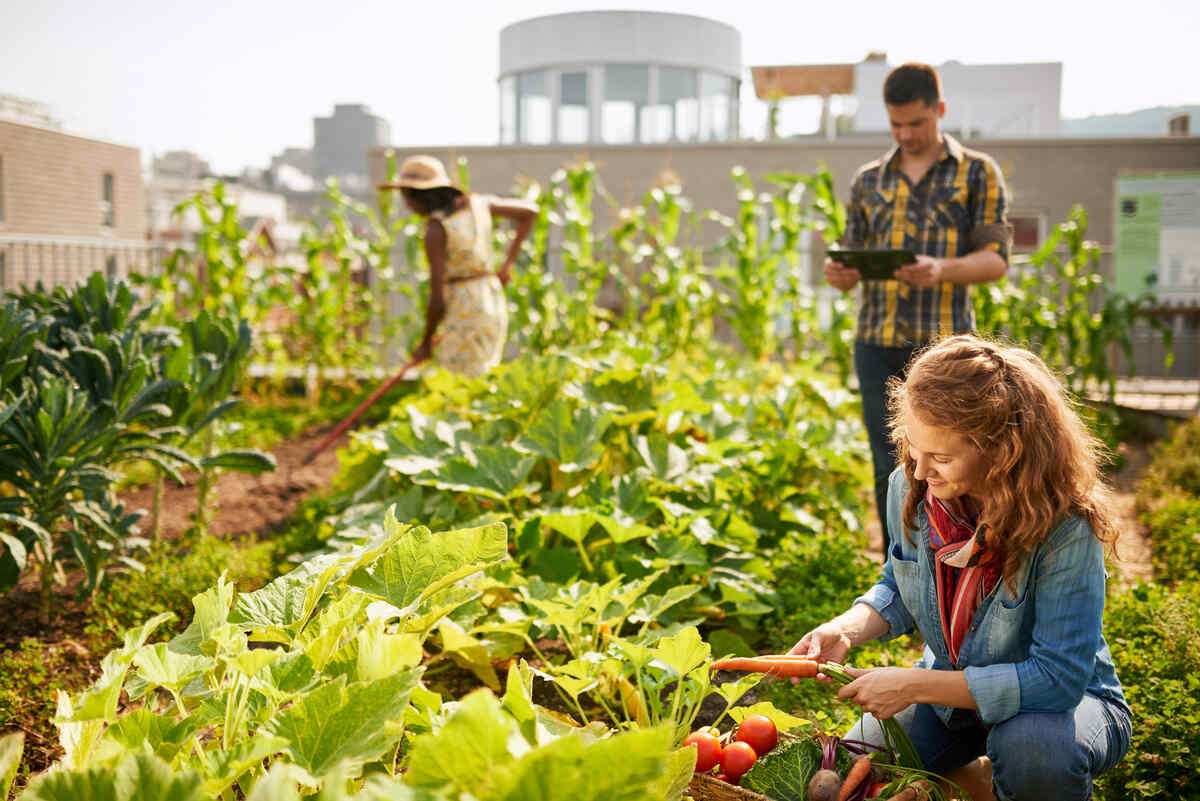Little Known Facts About City Blooming.
Little Known Facts About City Blooming.
Blog Article
The Of City Blooming
Table of ContentsIndicators on City Blooming You Need To Know7 Simple Techniques For City BloomingThe City Blooming DiariesThe Definitive Guide for City BloomingThe Single Strategy To Use For City Blooming
Interested in expanding food for sale in the City of Chicago? Believing about beginning a community yard? Changes to the Chicago Zoning Statute allow agricultural uses like community yards and urban farms in several parts of the city. Below is a checklist of often asked inquiries regarding the policies and regulations that cultivators should take into consideration when planning a city agriculture job.
The zoning modification does not modify any type of various other codes dealing with composting, building authorizations, acquiring or leasing City had residential property, organization licenses or environmental contamination. There are existing codes that control these problems and they stay completely result and might apply to your job. Neighborhood gardens are commonly owned or managed by public entities, civic organizations or community-based companies and maintained by volunteers.
Urban farms expand food that is intended to be marketed, either on a not-for-profit or for-profit basis. Due to their industrial function, urban farms need a company permit. Yes. A neighborhood yard is enabled to offer excess generate that was expanded on website if the sales are accessory or secondary to the garden's primary objective explained over.
Our City Blooming Statements
The amount of compost product can not go beyond 25 cubic backyards at any type of offered time according to the standards in 7-28-715 of the City's Municipal Code. Due to the fact that the dirt at many new yard sites needs amending, compost, dirt, wood chips, or other products can be gotten to create or boost the expanding room.

If a structure license is required then the hoophouse will be taken into consideration an accessory structure. You can learn more about the structure license needs by contacting the Division of Structures. The 25,000-square-foot size limit is planned to stop a single neighborhood yard from controling a provided block or taking away from the block's existing domestic or business personality.
The restriction does not use to yards found in Public Open Room (POS) areas. Can there be more than one neighborhood yard that is 25,000 square feet on a solitary block? Yes. The size limitation puts on individual gardens, not to individual blocks. No. Fencing is not called for, however, yards that have huge parking lot may be needed to install fence or various other landscape design attributes.
All about City Blooming
B1 & B2 areas call for that all commercial usage tasks be carried out inside. R districts limit industrial activity. The guidelines show the function and intent of the Zoning Code. Is fence required for city ranches? Yes. Fencings might be needed, in addition to landscape design and screening, for sure parking lot and outside work or storage space areas depending upon location and the details task taking location.
Yes. Urban ranches call for building permits and zoning authorizations before building. Various other forms of city review might be called for relying on details frameworks, tasks, dimension, landscape design, licensing, public heath and stormwater monitoring concerns. A number of these requirements are identified in the task style or permitting procedure, nevertheless, the applicant might be liable to independently identify specific licenses or allows that might be required.
Yes. The kind of certificate is established by what is happening at the website. The Department of Business Matters and Consumer Security can help determine the certain type of organization permit that's called for. Yes. Off road parking is required for a lot of commercial projects in Chicago. The needed variety of garage is based upon the variety of employees servicing site and not the square video footage of the expanding room.
Get This Report about City Blooming

Yes. A city ranch can market compost material created on website, however, the operation must abide by the laws in 7-28-715 of the Chicago Municipal Code. Yes. Aquaponic systems are allowed inside your home on city ranches in several zoning areas. However, a zoning review and structure authorization is called for in order to mount structures or systems and an organization certificate is called for as defined over.
Up to 5 hives or swarms of honey might be kept as an accessory use. Beekeepers need to register with the Illinois Department of Farming. For even more details about the proposed zoning change you may call the Department of Real Estate and Economic Advancement, Bureau of Planning and Zoning at 312.744.8563.
, which takes place in country locations at the edge of suburban areas.
City Blooming for Beginners
, that seek to create social networks founded on a shared values of nature and community holism. These networks can establish by way of official institutional assistance, ending up being incorporated right into local town planning as a "change town" movement click to investigate for sustainable metropolitan growth.
In either case, the much more straight accessibility to fresh veggie, fruit, and meat items that may be know via city agriculture can improve food security and food safety and security while reducing food miles, causing reduced greenhouse gas discharges, thus adding to climate adjustment mitigation. A few of the very first proof of city farming originates from Mesopotamia.
Report this page